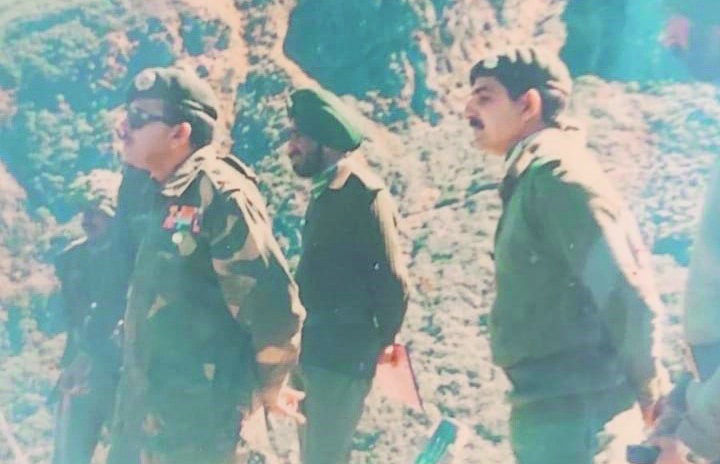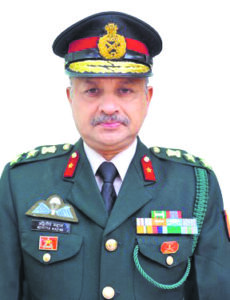
Due to political and diplomatic rationale during all the wargames and sand model discussions in the Indian Army our enemies on the Western and Northern borders have been monikered and given captivating names of ‘Nark’ and ‘Chandal’. I saw my army career taking off with me deployed as the company second-in-command opposite the ‘Chandal battalion’. Our unit was led by a fearless tiger in our Commanding officer, Lt Col JS Sethi who was known for his unimpeachable integrity. My company commander, Maj JS Suhag was another go-getter endowed with physical and mental fitness of a very high calibre. In February 1988, our battalion (27 Punjab) popularly known as the ‘Saatbees’ was the first responder to the construction of a helipad by the Chinese in the Sumdorung Chu sector.
The inter-se distance of one of our forward-most posts and that of the Chinese post was just about five metres. Chinese soldiers were quite diminutive just about five feet plus as compared to our Punjab-bred tall and burly six-feet-plus Sikh troops. However, as in one’s wont, the Chinese at this post tried to punch above their weight. They tried to gain psychological ascendancy by whispering abuses to our ferocious-looking Khalsas in their vernacular. Initially, our simple troops didn’t quite understand. After a few days, through their body language and on being made wiser by our interpreter my company boys realized to their shock that the Chinese were uttering abuses and not ‘sweet nothings’ as what seemed to be. My Sikh soldiers thought to themselves; ‘how can these piddly creatures try something which Punjabis have always been past masters at? It was the turn of my boys now. They patiently waited for that moment when the enemy would resort to their daily habit. But before that, the matter had been reported to Col Sethi, the CO.
Col Sethi directed Maj Suhag that our troops should respond to their tirade of abuses in the same vein but not without adding some ‘interest’ as a penalty. And that ‘interest’ would be in the form of pelting a few stones on their post. On a cold frosty morning, our sentries went a trifle too close to the Chinese sentries standing guard just across the fence. This led them to fall into the trap. As usual, one Chinese sentry whispered an abuse. What followed for the next 30 minutes left the Chinese gob-smacked and dazed forever. On a pre-determined signal, all our Sikh soldiers had converged onto the fence and hurled the choicest of the abuses at the Chinese in unison which they had never heard of in life. Of course, in addition, a few stones landing around frightened them no end. The Chinese were terrified and badly shaken up. Their eyes further widened and mouths gaped when their interpreter translated very patiently the intricacies of every abuse.
The interpreter very dutifully explained the meaning of every abuse to them down to each word. There was a pin-drop silence at their end. Thereafter, for the next two years of our tenure, the unit and the company never faced any problems nor did any of the Chinese soldiers ever try to abuse. During the Galwan incident in June 2020, I was reminded of a similar incident which had happened in front of the same company of mine in March 1988. Our company was located at a place known as ‘Jai Fort’ on a spur. We had a platoon outpost a little further away with a re-entrant in between (falling in our boundary). Right in the middle of the re-entrant ran a stream of water, the only water source in the entire area. This water asset was very much envied by the Chinese. On one fine day, we spotted a Chinese patrol trying to fill up the water into their jerricans from that stream. We tried to signal to them to move out from our territory by shouting from the hilltop. However, they pretended not to listen. The next day, my company commander, Maj Suhag came up with the brilliant idea of constructing an ad-hoc firing range. He got a few practice targets erected along the spur of the platoon outpost and established a firing point at the main post of Jai Fort. I, Lt Sanjay Datta (a very competent senior subaltern of mine) along with four best sharpshooters of the unit were tasked to bring down accurate bursts and volleys of fire from our deadly automatic machine guns at a rapid rate on the targets installed at the adjoining spur as soon as the Chinese patrol would violate our territory to fetch water.
There was no scope for any error as our shooting had to be precise to prevent enemy casualties and further escalation of the situation. The aim was crystal clear; to send the message across, ‘Don’t try and enter our territory’. The plan worked flawlessly. It was such a magnificent sight to watch Chinese soldiers running for cover back to their posts leaving their umpteen jerricans behind. On the lighter side, the next day we ensured their soldiers collected back their jerricans lest we face any audit objections from our stiff auditors for holding surplus jerricans at our post. The Chinese never ventured again to collect water for our entire tenure. My memory also jogs back to another incident at the Jai Fort. Our Commando platoon led by Naib Subedar Raghubir Singh (JCO) was on its way towards the Jai Fort company post to practice a counter-attack drill. Suddenly there was a loud cracking noise that echoed through the valley. We saw a big chunk of ice breaking from the Jai Fort Top sweeping off the leader of the patrol and carrying him down the hill towards the Line of Actual Control with China.
Fortunately, the patrol of about 10 men following him remained out of the danger zone which had witnessed a rapid downward flow of the ‘loose snow avalanche’. Maj Suhag sprung into action and led an intensive search of the area lasting several days and nights with total disregard for his safety. In this search operation spanning countless manhours, tonnes of snow were manually cleared but to no avail. Meanwhile, we had sounded Chinese about our missing personnel. Our men were so motivated that they used to go deep into the enemy territory unofficially looking for some tell-tale signs of his body. Finally, after about three months we were informed by the Chinese that they had spotted some dead body lying about 1.5 km inside their area. Chinese gave strict instructions to us allowing only four soldiers to enter their area without weapons to carry the body back. They expected entry of only jawans.
But, their eyes were full of admiration when they saw our second-in-command, Maj Jeevan Singh escorted by three of our commandos carrying the mortal remains of Naib Subedar Raghubir up the treacherous icy slope for a dignified cremation in our territory. While all this risky operation was in progress, it was Lt Col Sethi who kept a hawkish professional eye on the treacherous enemy with all the troops and weapons under his command waiting to be activated at the spur of the moment. Narrating this, I am reminded of my interview with Brig MPS Bajwa, another 27 Punjab officer who had captured Tiger Hill in July 1999. Brig Bajwa had painfully explained to me how the Pakistanis had left the dead bodies of their regular soldiers after the battle and how he had ensured a decent burial for them with all the military honours. This is why our great Indian Army stands apart from the rest of the armies of the world.
He commanded 15 Punjab in Lebanon under the UN flag in 2006 and was picked up to command the Assam Rifles Sector as DIG in the most sensitive sector of Churachandpur in Manipur. For his outstanding command in Manipur, he was selected as ‘Brigadier Operational Logistics’ for the entire Western Command in 2015.
